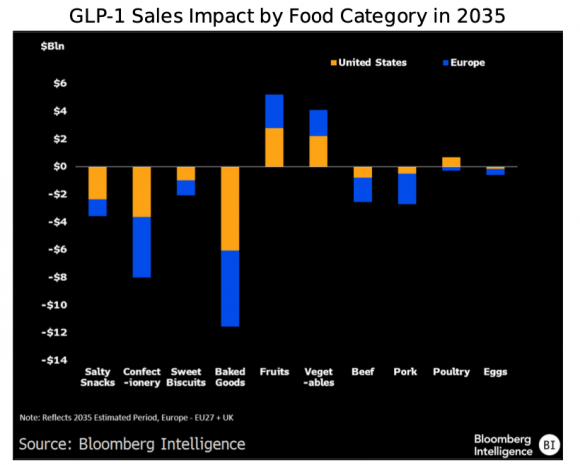
Breaking News
 Dead Internet Confirmed: It's agents, trolls and clankers all the way down
Dead Internet Confirmed: It's agents, trolls and clankers all the way down
 The U.S. Just Launched a Secret Dollar Empire (And Nobody Noticed)
The U.S. Just Launched a Secret Dollar Empire (And Nobody Noticed)
 Tom Bilyeu: Young Men Are Snapping -- This Cultural Rebellion Is Going to Get Ugly
Tom Bilyeu: Young Men Are Snapping -- This Cultural Rebellion Is Going to Get Ugly
 Most Economists Still Don't Understand How Inflation Is Destroying our Economy
Most Economists Still Don't Understand How Inflation Is Destroying our Economy
Top Tech News
 This tiny dev board is packed with features for ambitious makers
This tiny dev board is packed with features for ambitious makers
 Scientists Discover Gel to Regrow Tooth Enamel
Scientists Discover Gel to Regrow Tooth Enamel
 Vitamin C and Dandelion Root Killing Cancer Cells -- as Former CDC Director Calls for COVID-19...
Vitamin C and Dandelion Root Killing Cancer Cells -- as Former CDC Director Calls for COVID-19...
 Galactic Brain: US firm plans space-based data centers, power grid to challenge China
Galactic Brain: US firm plans space-based data centers, power grid to challenge China
 A microbial cleanup for glyphosate just earned a patent. Here's why that matters
A microbial cleanup for glyphosate just earned a patent. Here's why that matters
 Japan Breaks Internet Speed Record with 5 Million Times Faster Data Transfer
Japan Breaks Internet Speed Record with 5 Million Times Faster Data Transfer
 Advanced Propulsion Resources Part 1 of 2
Advanced Propulsion Resources Part 1 of 2
 PulsarFusion a forward-thinking UK aerospace company, is pushing the boundaries of space travel...
PulsarFusion a forward-thinking UK aerospace company, is pushing the boundaries of space travel...
 Dinky little laser box throws big-screen entertainment from inches away
Dinky little laser box throws big-screen entertainment from inches away
 'World's first' sodium-ion flashlight shines bright even at -40 ºF
'World's first' sodium-ion flashlight shines bright even at -40 ºF
MAHA And GLP-1s Are About To Deal A Big Blow To The Processed-Foods Industrial Complex

The US processed-food industrial complex, partly controlled by globalist mega-corps, is beginning to reckon with a new reality: Make America Healthy Again and rising weight-loss drug use are reshaping what Americans eat - and what they're walking away from, mostly junk food loaded with toxic seed oils, as well as alcohol.
In the coming weeks, Robert F. Kennedy Jr., President Donald Trump's Health and Human Services (HHS) Secretary, will be releasing new dietary guidelines to reset America's food supply chain away from toxic seed oils and highly processed foods toward real food. This is part of the MAHA trend.
MAHA, combined with the expected surge in GLP-1 demand (thanks to Trump's deal with Novo Nordisk and Lilly to cut costs), is likely to wipe out tens of billions in food and beverage sales in the coming years.
Bloomberg Intelligence analysts Jibril Lawal and Jennifer Bartashus forecast that the rapid adoption of GLP-1 weight-loss drugs will reduce US and European food and beverage sales by $53 billion by 2035.
Weight-loss drugs are reshaping consumption, and our analysis shows GLP-1s are set to erase $53 billion in food and beverage sales by 2035. Volume losses will be steepest in snacks, baked goods and confectionery -- a 4-6% sales drag in the US and 3-5% in Europe. Alcohol also faces a 2-4% drop as consumers shift to healthier options. -Lawal
Here are the key takeaways from the report that only suggest a coming food revolution across the West:
1. GLP-1s Could Cut Food, Beverage Sales by Billions
The adoption of GLP-1 drugs will significantly reduce US and European food and beverage consumption if uptake reaches 19.5% and 13.1% of the adolescent and adult population (ages 12-65+) by 2035, BI's high-end scenario analysis shows. Our model isolates volume impact only and excludes pricing increases or reformulations that might o?set lower consumption. Under these assumptions, baked-goods sales are expected to drop by $11.5 billion and confectionery $8 billion -- the largest food declines -- while beer and spirits may fall by $12.5 billion and $9.2 billion, the steepest beverage contractions. Concurrently, we anticipate demand to shift toward healthier alternatives, with bottled water, fruits and vegetables each gaining more than $4 billion over the period.



